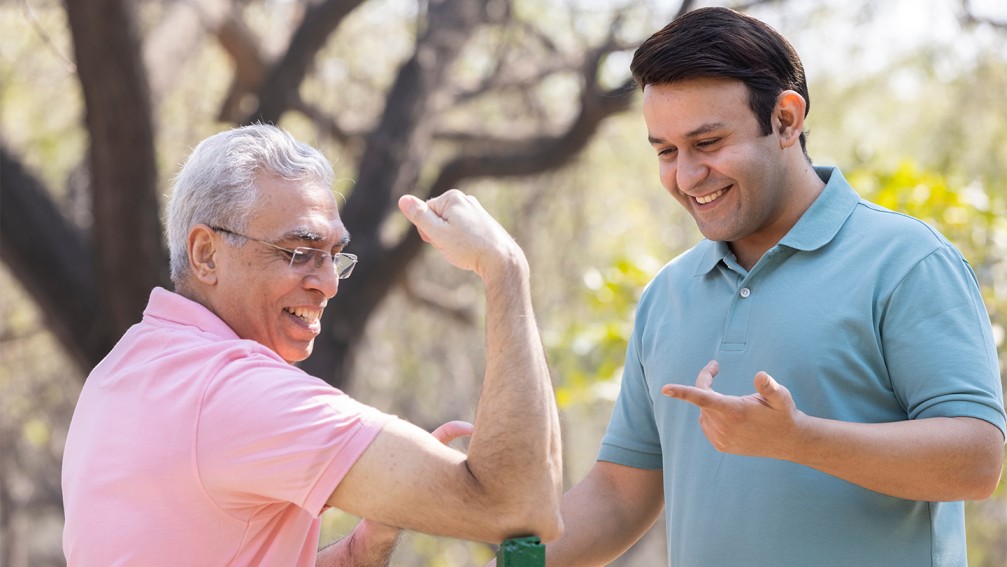Movement
More Muscle, More Strength? Not Always
We’ve all assumed that bigger muscles mean more power, but science (and the gym floor) says otherwise. Here’s why strength isn’t just skin deep.

“So wait…how is he lifting more than me?” my gym buddy Shivang asked, staring at a wiry guy deadlift twice his bodyweight. “I am literally twice his size.” It’s the kind of moment that scrambles your assumptions. I smiled and said, “Bro, strength and size? Not the same thing.”
Let’s unpack that, because it's one of the most common (and most misunderstood) fitness debates out there: Does muscle strength equal muscle size? Spoiler: Not exactly.
Related story: Commonly Neglected Muscles to Strengthen
The Myth of “Bigger Means Stronger”
We’ve all grown up on images of superhero-sized biceps lifting cars. So it’s natural to assume that muscle bulk equals raw power. And sure, sometimes it does. A 2014 study in the Journal of Strength and Conditioning Research found a strong correlation between chest muscle size and bench performance in athletes. But here’s the twist: real-world results often defy logic. Think bout it, why do elite Olympic lifters, many with smaller frames, routinely outlift much bulkier bodybuilders? It’s not magic. It’s efficiency.
Strength Is a Skill, Not Just a Look
Strength isn’t just about bulging biceps; it’s a whole orchestra of neural coordination, muscle composition, biomechanics, and practice. Imagine two people with the same-sized quads. One lifts heavier. Why?
Turns out, their nervous system, how effectively they fire muscle fibres, is a big player. In the first weeks of training, most strength gains come from your brain learning to use your muscles better, not from muscle growth. That’s called neural adaptation, and it’s backed by science. A meta-analysis (Systematic Review, 2025) confirmed that resistance training significantly improves both muscular strength and hypertrophy. This explains why people can get freakishly strong with minimal physical change at first. It’s all in the wiring.
Related story: Best Workouts For Muscle Gain
Not All Muscles Are Created Equal
Muscles aren’t just slabs of meat. They’re made of fast-twitch (power) and slow-twitch (endurance) fibres. The ratio varies from person to person. So two people with equal bicep size might have completely different strength profiles. And then there’s muscle quality.
Some bodybuilders inflate their muscles with sarcoplasmic hypertrophy, fluid, glycogen, and other non-contractile elements. That makes them look huge, but doesn’t always translate to real-world power. As The Muscle PhD (a science-based fitness platform) explains, it’s like blowing up a balloon versus building an engine.
Leverage and Geometry
Ever noticed how some people lift heavy despite looking average? They have longer muscle moment arms, favourable tendon insertions, or more efficient muscle architecture. A 2008 study (Ikegawa et al.) found that strength-trained athletes with larger muscles and higher pennation angles, like bodybuilders, produced less force per unit of muscle compared to leaner athletes like weightlifters. Basically, it supports the idea that how your muscles are built and attached matters as much as their size.
Related story: Ways to Maximise Muscle Recovery
Training Style Makes or Breaks It
Hypertrophy (muscle growth) training uses high volume and moderate weights. Strength training? Lower volume, heavier weights, more rest. A 2019 study in Medicine & Science in Sports & Exercise showed that tripling training volume made muscles bigger but didn’t boost strength any more than lower volume did. If you train for size, you will get size. If you train for strength, you will get strong. The overlap? Not as big as you’d think.
Related story: Bulking and Cutting: Get More Muscle Definition
But Wait, Does Size Ever Matter?
Of course it does. Think of muscle size as your potential for strength. A bigger muscle has more contractile fibres; it’s like a larger engine. But unless you tune it well (with technique, nervous system efficiency, etc.), it won’t perform at its peak.
This nuance was captured well in a 2019 debate in Sports Medicine, where researcher Jeremy Loenneke argued that strength and size are ‘completely separate phenomena.’ Others disagreed, showing that myofibrillar hypertrophy (growth of the muscles' contractile units) does boost strength, just not automatically.
Can You Have Both?
Absolutely. The best lifters in the world build a solid base of both. Think of a power lifter’s tree-trunk legs. They’ve maximised neural efficiency and grown their muscle to break plateaus. As one review put it: you can gain muscle with no strength increase, or get stronger without adding size. But over time, they usually grow together if you train smart.
So, the next time someone flexes in your face, remember this: strength isn’t just about how big your muscles look. It’s how well you use them. You might not win a bodybuilding contest, but you could outlift someone who does.
And Shivang? He switched up his training, lower reps, heavier weights, and lots of rest. A few weeks later, he grinned while deadlifting more than the guy he once envied.
Related story: Ways to Boost Post-Workout Muscle Recovery
Looking for an exclusive and unique experience, expert staff, and unparalleled member services? Come join us at URLife Studios! We offer a comprehensive range of wellness services that promote optimum well-being. We are a trusted source for unique holistic health and pregnancy care workshops. Our physiotherapists design customised rehab programs based on health conditions.
At UR.Life Studios, offers a complete multi-disciplined approach to fitness and well-being. The URLife Studio is a luxe wellness oasis, combining sleek modern design, lavish amenities, state-of-the-art equipment and personalised wellness programs.
- Yoga
- Kickboxing
- Pool and Bollywood aerobics
- Pregnancy care workshops
- Customised physiotherapy
- Spa
- Garden Cafe
- Women’s wellness program
EXPLORE MORE
Your posture is whispering a story about stress, screens, and slouching. Here are 6 exercises you must try!
In a world addicted to speed, Shavasana is proof that true regulation begins when you slow down. Discover how this humble pose is the simplest solution to the chaos within you!
When your thoughts won’t slow down, these yoga poses teach your body to stay present in the moment.
If you’re tired of starting over, this is the timeline that finally aligns with how your metabolism adapts and how habits stick.







.jpg)
.jpg)
.jpg)
